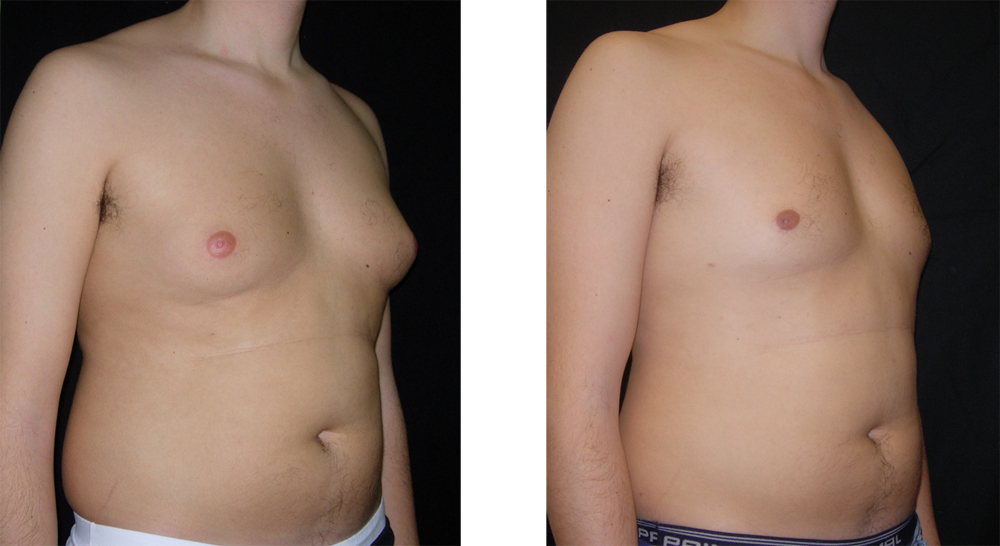Male Chest Reduction Surgery
Male Chest Reduction Surgery
Prodcedure:
1-3 hoursAnaesthesia:
General or local anaesthesia with sedationBack To Work:
Outpatient or (inpatient) 1 nightHospitalisation:
2-4 weeks depending on job activitiesCost:
2,000-8,000 eurosMale Breast Reduction (Gynecomastia Correction)
Introduction
Men can sometimes suffer from a condition referred to as gynecomastia. (or enlargement of breasts). True gynecomastia occurs when glandular tissue in the breasts builds up, causing the breasts to swell. Pseudo-gynecomastia (or breast enlargement due to fat deposits), on the other hand, is a build-up of fatty deposits in, under or around the nipple. Mixed gynecomastia is a combination of both conditions. Gynecomastia has a profound impact on self-confidence and often causes considerable embarrassment; however, this disorder can be readily treated with surgery.
Below we answer the questions that are posed to us most frequently during consultations for gynecomastia correction.
What causes gynecomastia?
Gynecomastia is a benign condition caused by an increase in male breast tissue (true gynecomastia) or fat deposits (pseudo-gynecomastia). It occurs due to hormonal changes (during puberty, adolescence and in advanced age) and fluctuations in weight. In rare cases, this condition may be a result of underlying health issues, which should be carefully evaluated by the plastic surgeon where appropriate. Understandably, all forms of gynecomastia cause great embarrassment for sufferers and they have a profoundly negative effect on self-esteem and well-being.
What are the benefits of Male Breast Reduction?
Corrective surgery is performed to improve self-esteem and confidence by reducing the breasts to a more regular size.
Which are the different types of gynecomastia?
- gynecomastia – a build-up of glandular tissue
- pseudo-gynecomastia (or breast enlargement due to fat deposits)
- mixed gynecomastia – a combination of both conditions.
Gynecomastia can be graded as mild, moderate or severe.
How is pseudo-gynecomastia treated??
Liposuction may be used to remove excess fat deposits from around the breasts. This procedure leaves tiny scars (approximately two millimetres) from the small incisions made to insert the suction cannula during treatment.
What does true gynecomastia correction involve?
Corrective surgery for true gynecomastia involves removing unwanted glandular tissue. The incisions are made in the lower half of the areola, allowing the surgeon to excise glandular tissue, and a tissue sample is taken for biopsy purposes. Generally, the scars from this procedure are discreetly located at the areola, meaning they are barely noticeable.

What about the surgical scars to remove large amounts of excess skin?
Severe cases, which have caused the breasts to droop due to a significant fluctuation in weight, may require additional incisions to remove excess skin. Removing large amounts of skin requires a circular scar within the nipple area. In some cases, gynecomastia correction can result in other types of scarring,depending on the technique applied. It is essential to discuss all of the available options with the surgeon beforehand. The surgeon begins by making markings as a guideline for the incisions, and to provide a visual account of surgery for the patient. Generally, we apply techniques which minimise residual scarring as much as possible.
What type of anaesthesia does this procedure require? What about stitches?
Severe cases are performed under local anaesthesia as an outpatient treatment, whereas moderate to severe cases require either local anaesthesia with intravenous sedation or general anaesthesia. Internal, dissolving stitches are used to provide more comfortable healing during recovery.
Are surgical drains used with this type of surgery?
Temporary suction drains, to drain fluid from the treatment site, are used in post-op recovery for true gynecomastia correction.
Please contact us for more information about Male Breast Reduction and Gynecomastia Correction. Contact Us
